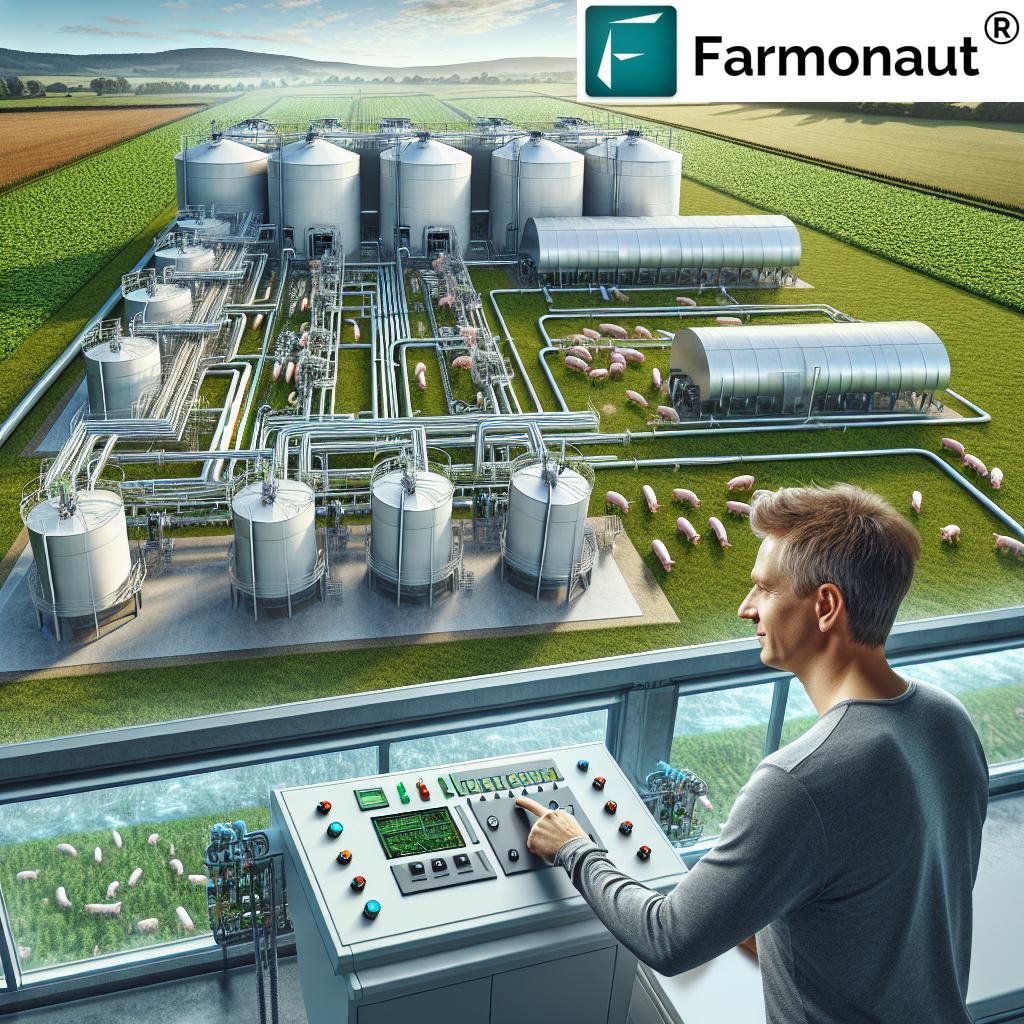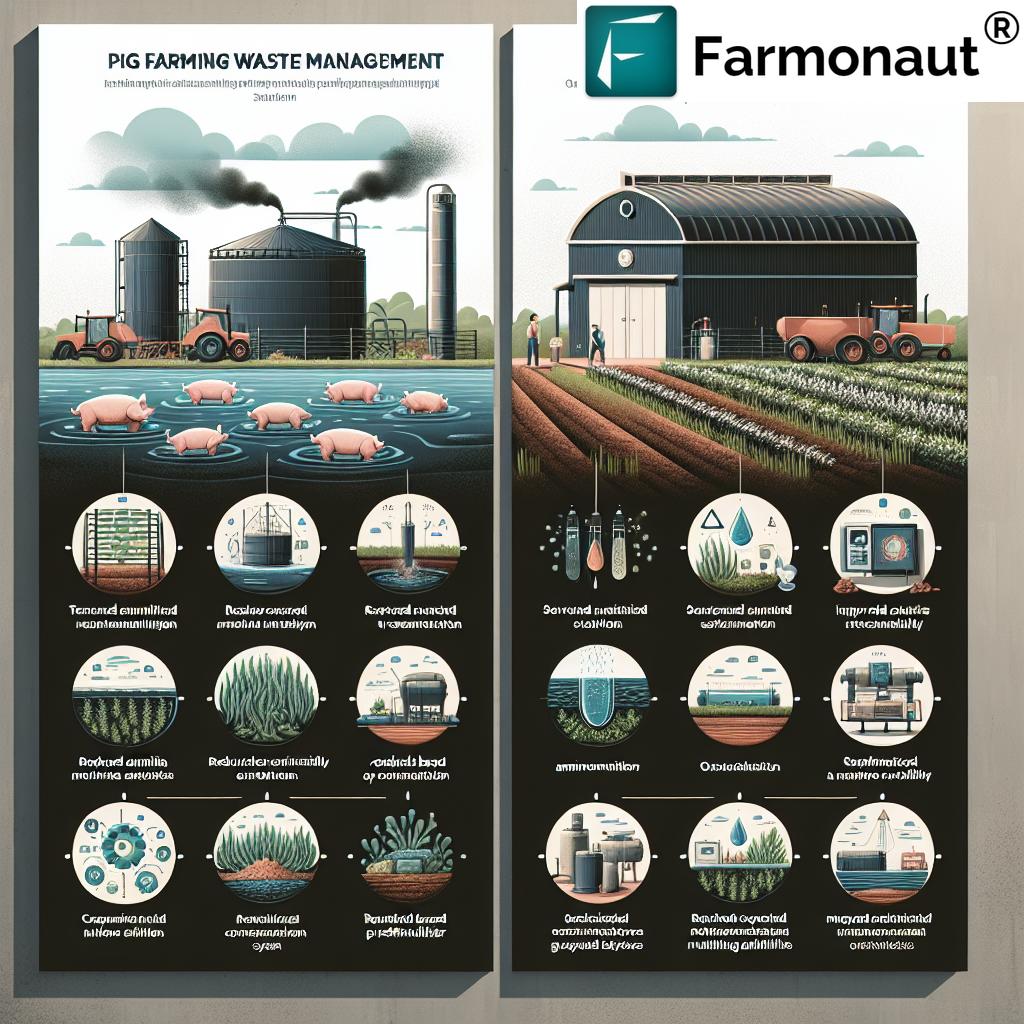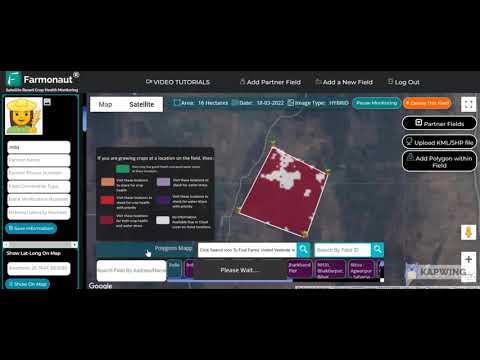Revolutionizing Pig Farm Waste: Innovative Slurry Treatment Technology Boosts Sustainability in South West England
“Innovative slurry treatment technology reduces pig farm waste volume and ammonia emissions by up to 80%.”
In the ever-evolving landscape of agriculture, we’re witnessing a revolution in sustainable slurry management that’s transforming pig farming in South West England. As we delve into this groundbreaking development, we’ll explore how innovative farm waste treatment is reshaping the future of agricultural nutrient recycling and eco-friendly pig farming.
The Dawn of a New Era in Slurry Management
Pig farming has long been associated with significant waste management challenges. The sheer volume of slurry produced and its potential environmental impact have been persistent concerns for farmers and environmentalists alike. However, a pig farm in South West England has taken a giant leap forward by adopting cutting-edge biofertilizer production technology that’s set to redefine industry standards.

This revolutionary approach to slurry management incorporates a seaweed-based prebiotic, marking a significant milestone in reducing ammonia emissions in agriculture. The system not only addresses the pressing need for sustainable waste management but also paves the way for energy-efficient livestock waste processing.
Breaking Down the Technology: How It Works
At the heart of this innovative system lies advanced slurry separation techniques that efficiently process farm waste. Here’s how the technology operates:
- Prebiotic Treatment: The process begins with the addition of a seaweed-based prebiotic to the slurry. This natural additive kickstarts the transformation process.
- Separation Process: The treated slurry then undergoes a sophisticated separation procedure, dividing it into nutrient-rich solids and cleaner water.
- Volume Reduction: Through this process, the overall volume of slurry is significantly reduced, addressing one of the primary challenges faced by pig farmers.
- Ammonia Mitigation: A key benefit of this technology is its ability to substantially lower ammonia emissions, contributing to improved air quality around farm areas.
This innovative approach not only tackles waste management head-on but also optimizes crop nutrient availability, creating a win-win situation for both farmers and the environment.
The Impact on Farming Practices
The adoption of this technology is revolutionizing farming practices in several ways:
- Reduced Storage Needs: With significantly less volume to manage, farmers can minimize their slurry storage requirements.
- Environmental Benefits: The reduction in ammonia emissions and overall waste volume translates to a smaller environmental footprint for pig farms.
- Tailored Biofertilizers: The separated solid component serves as an excellent base for creating customized biofertilizers, enhancing soil health and crop yield.
- Water Conservation: The cleaner water separated from the slurry can be repurposed for various on-farm uses, promoting water conservation.
“New seaweed-based prebiotic system in South West England transforms 100% of pig slurry into nutrient-rich biofertilizers.”
Economic Viability and Scaling Potential
One of the most exciting aspects of this technology is its economic viability. Initial investments in the system are offset by:
- Reduced costs associated with traditional slurry management
- Potential income from the sale of high-quality biofertilizers
- Savings on synthetic fertilizers for crop production
- Improved overall farm efficiency and productivity
Moreover, the scalability of this technology is promising. While currently implemented in pig farming, there’s significant potential for adaptation to other livestock operations, particularly in the dairy sector.

Comparative Analysis: Traditional vs. Innovative Slurry Management
To fully appreciate the impact of this new technology, let’s compare it with traditional slurry management methods:
| Aspect | Traditional Method | Innovative Technology | Improvement Percentage |
|---|---|---|---|
| Slurry Volume Reduction | Minimal | Up to 80% | 80% |
| Ammonia Emissions | High | Reduced by up to 80% | 80% |
| Storage Space Required | Large | Significantly reduced | ~60% |
| Nutrient Availability for Crops | Variable | Optimized | ~50% |
| Environmental Impact | High | Low | ~70% |
| Cost-Effectiveness | Moderate | High | ~40% |
| Energy Efficiency | Low | High | ~60% |
This comparison clearly illustrates the significant advantages of the innovative slurry treatment technology over traditional methods.
The Role of Technology in Modern Farming
As we witness this leap in slurry management technology, it’s crucial to recognize the broader role of technology in modern farming. Companies like Farmonaut are at the forefront of this agricultural revolution, offering advanced solutions that complement innovative on-farm practices.
Farmonaut’s satellite-based farm management solutions provide valuable insights that can further enhance the efficiency of farms adopting new slurry management technologies. By leveraging real-time crop health monitoring and AI-based advisory systems, farmers can make more informed decisions about nutrient application, complementing the benefits of their advanced slurry treatment systems.
Environmental Impact and Sustainability
The environmental benefits of this new slurry treatment technology are far-reaching:
- Reduced Greenhouse Gas Emissions: By minimizing ammonia emissions, the technology contributes to lower overall greenhouse gas emissions from agriculture.
- Improved Soil Health: The production of high-quality biofertilizers enhances soil structure and fertility, promoting sustainable land use.
- Water Quality Protection: With better management of liquid waste, the risk of water pollution from runoff is significantly reduced.
- Biodiversity Support: Lowered environmental impact can help preserve local ecosystems and support biodiversity around farm areas.
These environmental benefits align perfectly with global efforts towards sustainable agriculture and carbon footprint reduction.
Integrating Advanced Technologies for Comprehensive Farm Management
While the innovative slurry treatment system revolutionizes waste management, integrating it with other advanced agricultural technologies can create a holistic approach to farm management. This is where platforms like Farmonaut play a crucial role.
Farmonaut’s satellite-based crop health monitoring can help farmers:
- Optimize the application of biofertilizers produced from treated slurry
- Monitor the impact of new fertilization practices on crop health
- Make data-driven decisions about resource allocation and farm management
By combining on-ground innovations like the slurry treatment technology with satellite-based monitoring and AI-driven insights, farmers can achieve unprecedented levels of efficiency and sustainability.
The Future of Sustainable Farming
As we look to the future, the implications of this innovative slurry treatment technology extend far beyond pig farming in South West England. We anticipate:
- Widespread Adoption: As the benefits become more widely recognized, we expect to see similar systems implemented across various livestock operations.
- Technological Advancements: Continued research and development will likely lead to even more efficient and effective waste management solutions.
- Policy Support: Governments may introduce incentives or regulations to encourage the adoption of such sustainable practices.
- Cross-Sector Applications: The principles behind this technology could inspire innovations in other agricultural sectors and beyond.
Challenges and Considerations
While the benefits of this new technology are clear, it’s important to address potential challenges:
- Initial Investment: The upfront cost of implementing the system may be a barrier for some farmers.
- Training and Adaptation: Farmers and farm workers will need to adapt to new practices and potentially undergo training.
- Regulatory Compliance: Ensuring that the new system meets all relevant environmental and agricultural regulations is crucial.
- Scalability: While promising, the technology’s effectiveness on larger scales needs to be thoroughly tested and verified.
Addressing these challenges will be key to the widespread adoption and success of this innovative approach to slurry management.
The Role of Data in Modern Agriculture
In the context of these agricultural innovations, the importance of data cannot be overstated. Platforms like Farmonaut provide crucial data-driven insights that can complement and enhance the benefits of on-farm technologies like the new slurry treatment system.
Key areas where data plays a vital role include:
- Precision application of biofertilizers derived from treated slurry
- Monitoring crop response to new fertilization practices
- Optimizing resource allocation based on real-time farm conditions
- Tracking environmental impacts and sustainability metrics
By leveraging data from satellite imagery and AI-driven analytics, farmers can make more informed decisions, further maximizing the benefits of their waste management innovations.
Explore Farmonaut’s API for advanced agricultural data integration
Community and Economic Impact
The adoption of this innovative slurry treatment technology has implications that extend beyond the farm gate:
- Local Economy: Potential for new jobs in technology maintenance and biofertilizer production
- Rural Development: Improved farm sustainability can contribute to the long-term viability of rural communities
- Knowledge Sharing: Farms adopting this technology can become learning centers for sustainable practices
- Supply Chain Improvements: Production of high-quality biofertilizers can benefit local crop farmers and gardeners
These broader impacts highlight the potential of innovative agricultural technologies to drive positive change in rural economies and communities.
FAQs about Innovative Slurry Treatment Technology
- Q: How does the seaweed-based prebiotic work in slurry treatment?
A: The seaweed-based prebiotic acts as a catalyst, initiating biological processes that break down the slurry more efficiently. It helps in reducing the volume and ammonia content while enhancing the nutrient profile of the end products. - Q: Can this technology be applied to other types of livestock waste?
A: While currently optimized for pig slurry, the principles of this technology show promise for adaptation to other livestock waste, particularly in dairy farming. Further research and development are ongoing to expand its applications. - Q: What are the long-term benefits for soil health when using biofertilizers produced from this process?
A: Biofertilizers from this process can improve soil structure, increase organic matter content, enhance water retention capacity, and promote beneficial microbial activity. This leads to healthier, more productive soils over time. - Q: How does this technology contribute to reducing a farm’s carbon footprint?
A: By significantly reducing ammonia emissions and producing renewable fertilizers, the technology helps lower the overall greenhouse gas emissions associated with farm operations and synthetic fertilizer production. - Q: What is the return on investment timeline for implementing this system?
A: While it varies depending on farm size and specific circumstances, many farms see a return on investment within 2-5 years, considering savings on waste management, reduced fertilizer costs, and potential income from biofertilizer sales.
Conclusion: A Step Towards Sustainable Agriculture
The innovative slurry treatment technology implemented in South West England represents a significant leap forward in sustainable agriculture. By addressing the long-standing challenges of waste management in pig farming, this system not only improves farm efficiency but also contributes to broader environmental goals.
As we’ve explored, the benefits of this technology are multifaceted:
- Dramatic reduction in slurry volume and ammonia emissions
- Production of valuable, nutrient-rich biofertilizers
- Improved environmental sustainability of pig farming operations
- Potential for adaptation to other livestock sectors
- Economic benefits through reduced costs and new revenue streams
The success of this system in South West England serves as a beacon for the global agricultural community, demonstrating that innovative solutions can address pressing environmental concerns while enhancing farm productivity and profitability.
As we look to the future, the integration of such on-farm innovations with advanced data-driven technologies like those offered by Farmonaut presents exciting possibilities for the continued evolution of sustainable farming practices. By combining cutting-edge waste management techniques with precision agriculture tools, we’re paving the way for a more efficient, environmentally friendly, and productive agricultural sector.
The journey towards fully sustainable agriculture is ongoing, but innovations like this slurry treatment technology represent significant milestones along the way. As more farms adopt these advanced practices and technologies, we move closer to a future where agricultural productivity and environmental stewardship go hand in hand, ensuring a sustainable food supply for generations to come.
Learn more about integrating agricultural data with Farmonaut’s API Developer Docs






